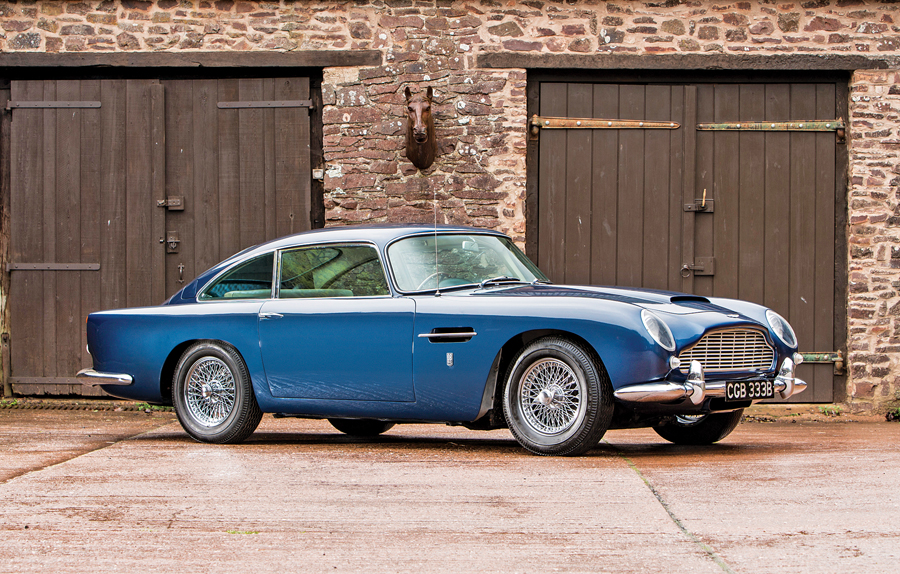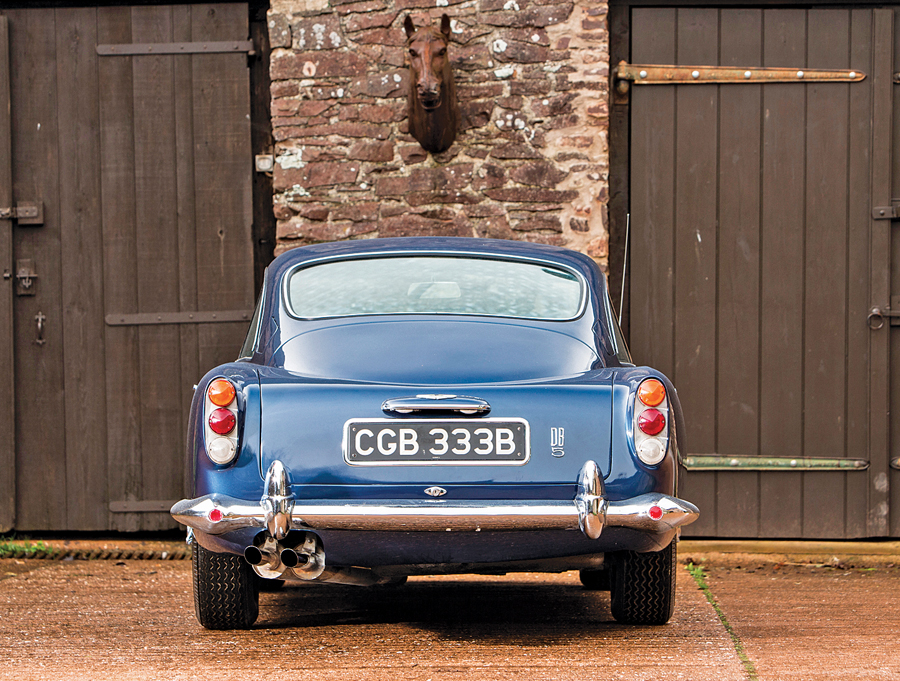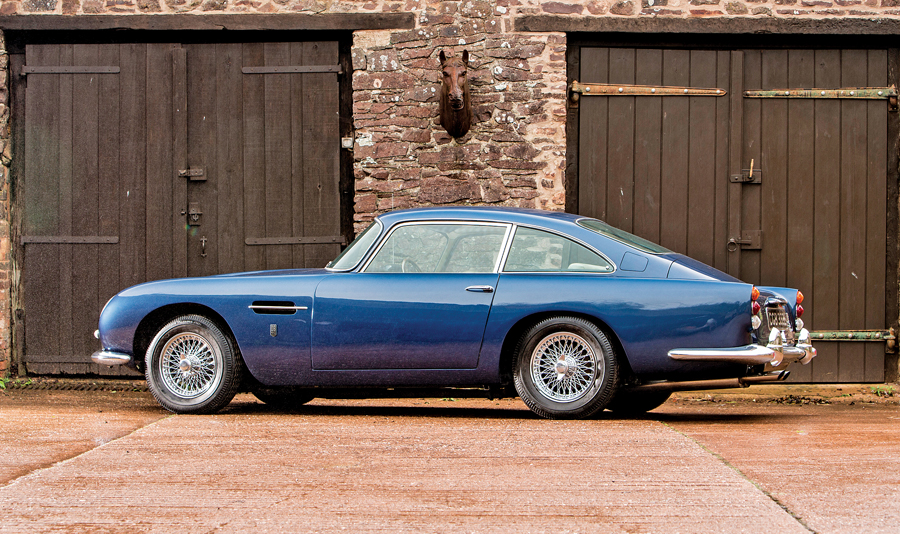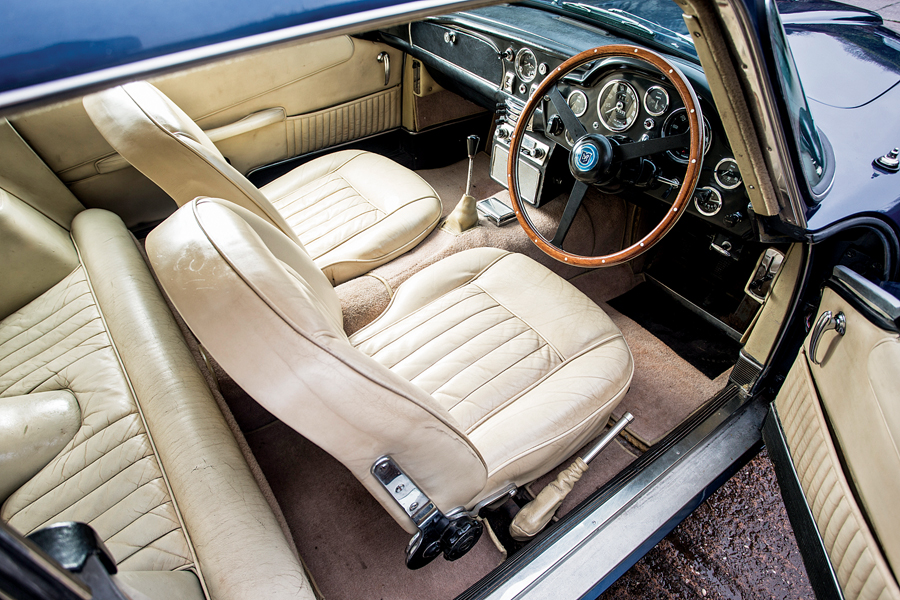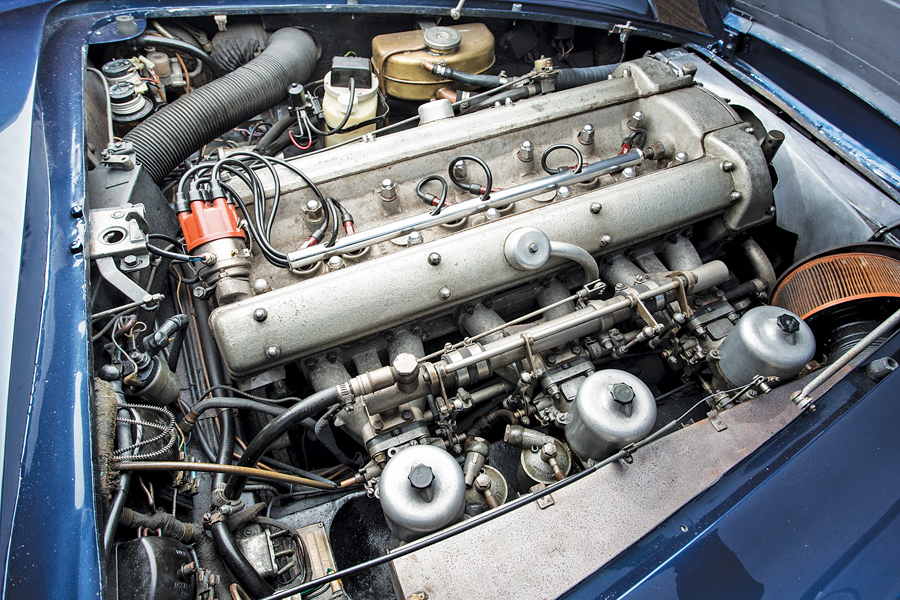SCM Analysis
Detailing
| Vehicle: | 1964 Aston Martin DB5 |
| Years Produced: | 1964–66 |
| Number Produced: | 886 coupes (plus 123 convertibles and 12 station wagons) |
| Original List Price: | $12,775 |
| SCM Valuation: | $917,300 |
| Tune Up Cost: | $500 |
| Distributor Caps: | $81 |
| Chassis Number Location: | Plate on right side of scuttle |
| Engine Number Location: | On left of cylinder block next to alternator |
| Club Info: | Aston Martin Owners Club |
| Website: | http://www.amoc.org |
| Alternatives: | 1962–63 Aston Martin DB4 Series V, 1961–62 Jaguar E-type 3.8, 1954–57 Mercedes-Benz 300SL Gullwing |
| Investment Grade: | A |
This car, Lot 209, sold for $721,955, including buyer’s premium, at Bonhams’ annual Aston Martin Works sale in Newport Pagnell, U.K., on May 13, 2017.
For years, I’ve viewed the DB5 as a barometer of the state of health of the overall classic car market. It’s the automotive equivalent of the Mars bar. With near 900 coupes built, it’s a quantifiable, repeatable consumer item that holds its relative value steady whatever’s happening in the stock market and is unaffected during unrest in the world.
In the early 2010s, they were steady around £350k (then around $550k). The James Bond car selling for $4.6m appeared to be the catalyst for a climb to almost twice that — I remember feeling shock when one sold in Paris late in 2014 for over a million dollars, and another jolt with the realisation that this was the new norm. That turned out to be a brief peak before the general market cooling after 2015, and now prices in the U.K. have broadly dropped back to the £550–£650k ($700k–$850k) range.
Meanwhile, the DB6 has caught up to half that or a little more in some cases, meaning that its relative value next to its predecessor has increased, but that’s another story. Also, remember the pound has bombed 15% against the dollar since last year, so £600k then was $925k; now it’s nearer $770k.
Unusually for the annual Aston Martin sale, now in its 18th year, Bonhams’ catalog sported only one DB5. This was a quite original car that had been put away for a time, and it needed at least recommissioning before it took to the road again.
A long, lightly exercised retirement
Our subject car was delivered on July 21, 1964, to Albert J Ross of Millerston, Glasgow. The vendor had acquired it in 1972, when he was 21, and he owned it for 45 years — although it was mostly retired for the past 25 years.
At the Bonhams sale, it was showing 78,333 miles. Around the time it came out of regular use, the engine was rebuilt and the front seats re-upholstered.
It has been run up to temperature every month, and the oil changed yearly. The catalog said that it had been “exercised lightly,” which would probably explain why the brake calipers were rebuilt about 10 years ago and the clutch replaced several years ago.
Running the car would have discovered sticking brakes and a tired clutch.
Much of the maintenance, which included an engine top-end overhaul, has been at TT Workshops in Wiltshire, better known for resurrecting significant pre-war cars. The vendor and a full-time mechanic carried out the routine servicing.
It was repainted last year, which does ring slight alarm bells, as I would have preferred to see it au naturel — which is better to gauge the state of the body. That might explain why the DB5 flank badges were in the wrong place — they are less than a foot out of place up near the side vents rather than near the bottoms of the front wings.
Once seen, it can’t be unseen.
Dedicated care pays off for seller and buyer
Because of all that ongoing care, the required recommissioning the catalog refers to — which is often trotted out as glibly as that catch-all “aircon needs a regas,” but can end up as nearly a full restoration — might in this case really be limited to a change of fluids and rubber seals, fuel lines and fresh tires. It’s a fair bet the brake calipers will need unsticking again.
As a result of this ongoing care, this car hit a fairly healthy price for a car that didn’t travel much for 25 years. That it was the only DB5 in the sale might have focused attention as well.
The hammer price was just enough to get the job done, inasmuch as it exactly matched the £500k lower estimate, near where the reserve usually lurks. So we’ll call this the right price for a correctly estimated car.
Catalog estimates have been slightly ambitious in the U.K. for the past 18 months, with a large proportion of cars appearing to sell cheaply when it’s the catalog— not the final price — that’s been off. However, Bonhams appeared to have weighed up this one realistically.
So this was a representative price of a driver-quality original car, a notch or two behind restored/concours, and like the rest of the market, around 15% down from its peak in 2015.
The Mars bar/DB5 yardstick still holds good. ♦
(Introductory description courtesy of Bonhams.)
